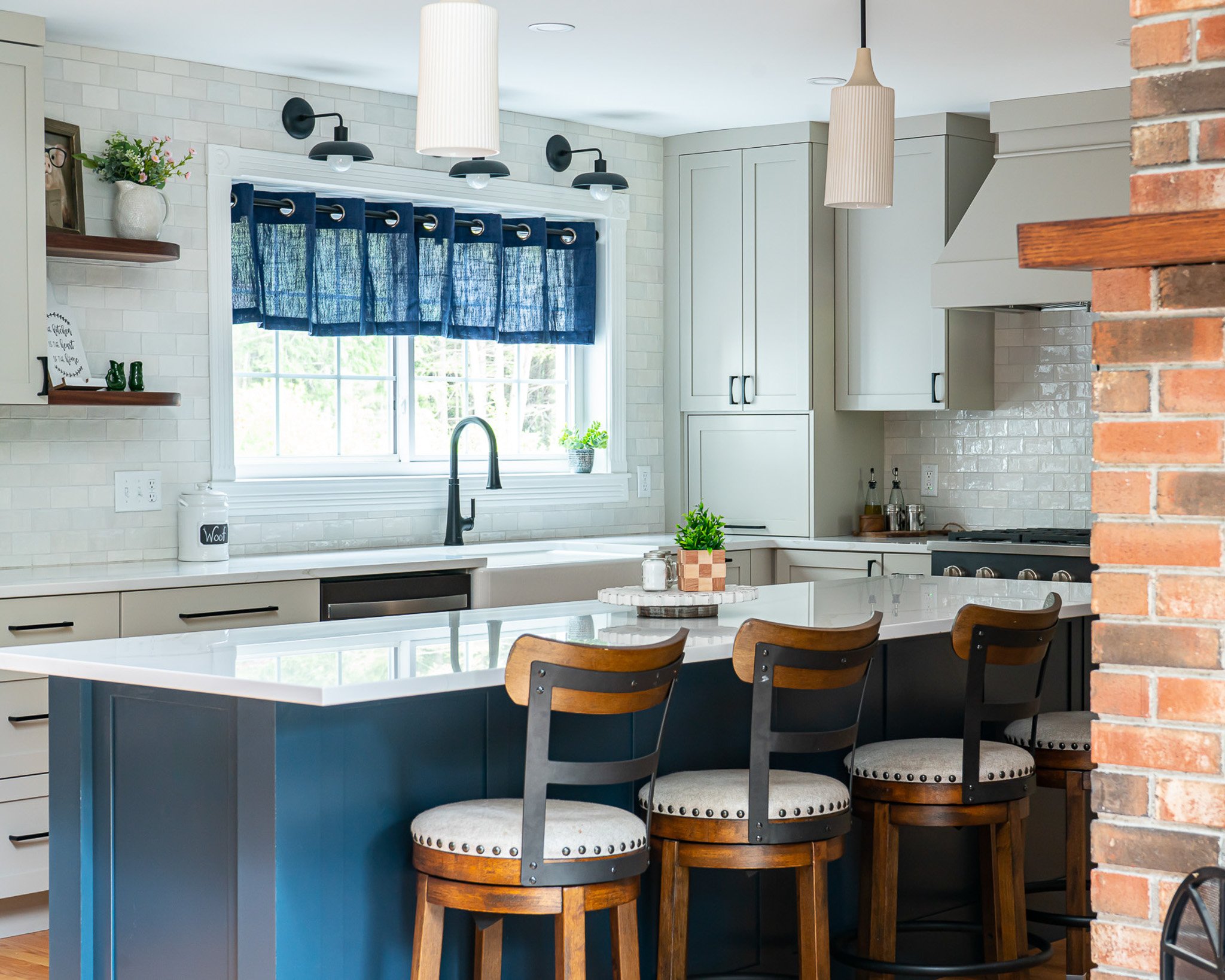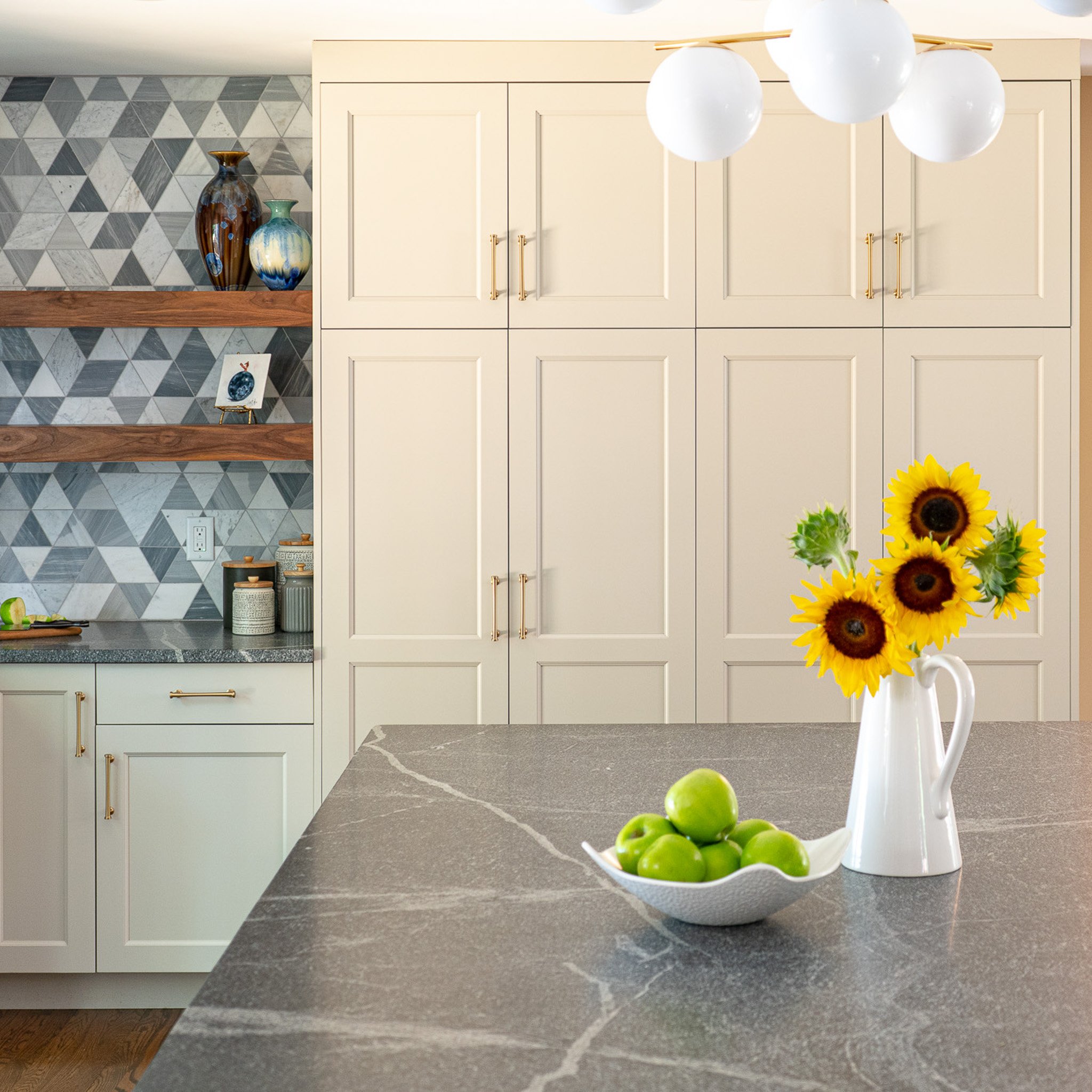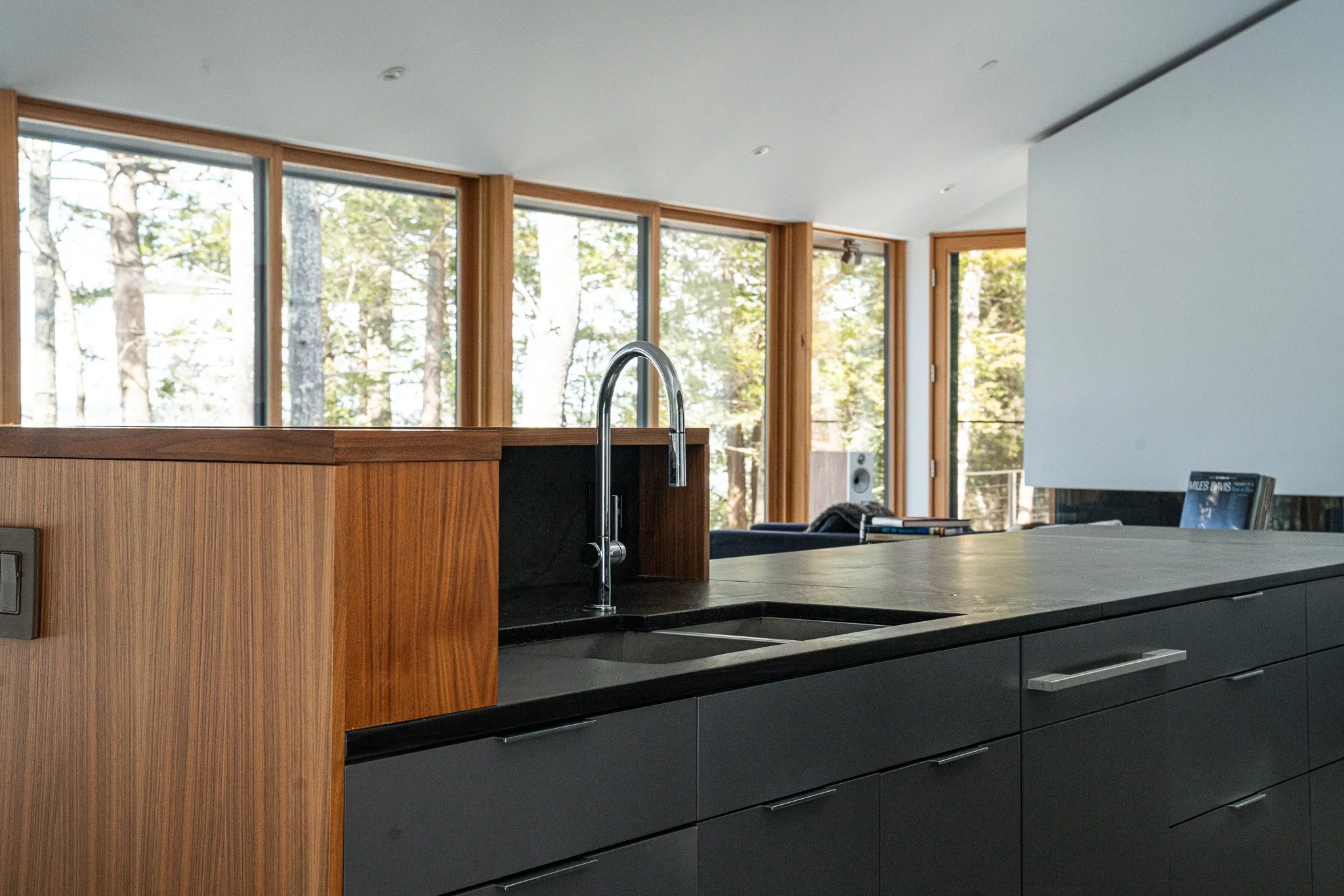Bringing the Outdoors In: Design Elements Inspired by Maine’s Landscape
Maine’s landscape is unlike anywhere else. We have the sharp, jagged coastline where waves crash against granite ledges, dense pine forests that stay green through the harshest winters, and rolling farmlands dotted with weathered barns. Even the coastline itself tells a story of variety—from rugged, ocean-battered stretches to the quiet, forest-lined inlets of the midcoast. This diversity isn’t just beautiful to look at—it’s an endless source of inspiration for home design.
Design Influence from Coast to Mountains
Each region of Maine brings its own influence to interior design. Along the coast, you’re more likely to see Cape-style cottages or grand estates with light, airy spaces. Move inland and the architecture shifts to timber-frame homes, log cabins, and rustic retreats. Scattered throughout the state are farmhouses, each with its own blend of practicality and charm. These styles carry over into interiors, creating an ever-changing mix of wood, stone, light, and color that feels deeply connected to the land.
For homeowners, bringing the outdoors in has an immediate impact. It makes rooms feel larger by extending the visual space beyond the windows, and it adds a sense of calm that comes from being surrounded by nature. Sometimes that’s the warmth of wood cabinetry and exposed beams; other times it’s the cool, grounding presence of a stone countertop or tiled floor.
Natural Materials with Maine Roots
Oak and pine are staples in Maine interiors. Wide-plank pine floors are a signature of older homes, while red oak is a popular choice for new builds thanks to its durability. Granite, another Maine hallmark, often appears as front steps, fireplace surrounds, or structural elements. While it’s less common for countertops today, it still brings a sense of strength and permanence wherever it’s used.
Reclaimed or locally sourced materials take authenticity a step further. Exposed beams from historic homes carry a sense of place, and when reclaimed isn’t possible, some homeowners take it into their own hands. One family we know had several red oaks removed from their property before rebuilding their home. They had the trees processed and dried, then used the lumber for beams, trim, and custom details throughout the house. The result wasn’t just beautiful—it was a story woven into the home’s structure.
Maine is rugged, and our interiors reflect that. Finishes that can handle daily life—floors that can take a beating, wood furniture that can chip and still look good—fit right in. Materials that feel timeworn or that will only improve with age capture Maine’s essence better than anything overly polished or pristine.
Color Palettes that Reflect Maine’s Diversity
One of the most unique things about designing in Maine is that your surroundings don’t dictate a single color palette—you can go warm or cool no matter where you live. A home perched on the coast may also be nestled in a pine forest, and a mountain cabin might be surrounded by both granite ledges and open fields. That kind of variety means you can draw inspiration from multiple sources, whether that’s the deep blues and grays of the Atlantic, the muted greens and browns of the forest, or the soft taupes and stone tones found in the mountains.
The key is to choose colors that feel like a natural extension of what you see outside your windows. Instead of locking yourself into a “coastal” or “mountain” scheme, focus on tones that create harmony between indoors and out. Avoid overly saturated, theme-driven colors, and opt for softer hues and natural finishes that will feel timeless and adaptable through the seasons.
Framing the View
Window placement can be just as important as the materials inside the home. Large, divided-light windows in coastal homes frame sweeping ocean views, while wide picture windows in woodland cabins bring the forest right to your living room. Open layouts also play a role, allowing those views to be enjoyed from multiple vantage points.
The connection can extend beyond the windows. Choosing similar flooring materials or colors for both interior and exterior spaces helps create visual continuity—think stone tile that flows from a kitchen to a connected patio, or wood tones that match a covered porch. Landscaping that draws the eye from the window into the yard completes the feeling that the outdoors is simply another “room” in the home.
Designing for Every Season
Maine’s seasons each bring their own beauty, and interiors can adapt without losing their natural feel. Year-round, the big elements—wood beams, stone features, and soft, neutral wall colors—stay the same. In winter, adding heavier textiles like wool throws and area rugs can make a space feel warmer. In summer, lighter fabrics like linen and cotton, plus fresh cut flowers, keep things bright and airy. Seasonal decor can rotate in and out while the foundational design remains consistent.
Details that Bring it All Together
You don’t have to renovate to bring the outdoors in—small details can make a big difference. Incorporating plants, whether potted or freshly cut, instantly softens a room and adds life. Artwork that features Maine landscapes or wildlife connects the space to its surroundings. Handwoven rugs, pottery, and furniture from local makers or antique stores add texture and authenticity while supporting the community. Even textiles—like a wool blanket from a Maine mill—can bring warmth, both literally and in the way they tell a story.
Bringing the outdoors in is about more than style—it’s about connection. When a home reflects the colors, textures, and materials of its surroundings, it feels more grounded, more at peace, and more authentically “Maine.” Whether you live by the sea, in the woods, or on a hill with a mountain view, the landscape outside your door can be the best inspiration for the space you call home.




